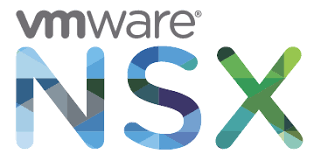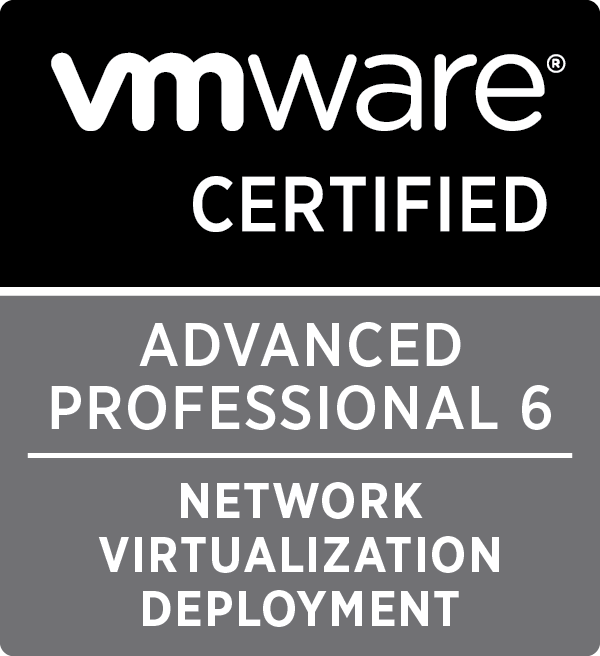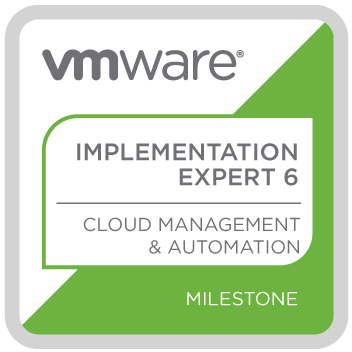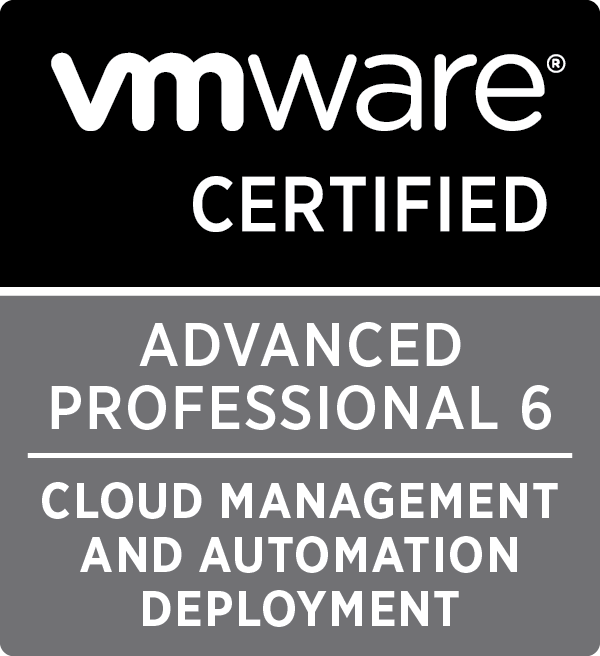
When you add a host from a VMware NSX enabled cluster, the NSX VIBs are automatically installed. The process steps for adding hosts to a VMware NSX enabled cluster is the same as if you were adding a host from a standard vSphere cluster. Prerequisites This post assumes the following: The target VMware ESXi host(s) are already connected to vCenter Server. The target VMware ESxi host(s) are already connected to any relevant Distributed Switches.
Written by Christopher Lewis on July 30, 2017.

When you remove a host from a VMware NSX enabled cluster, the NSX VIBs are automatically removed. The process steps for removing hosts from a VMware NSX enabled cluster is the same as if you were removing a host from a standard vSphere cluster. Remove a Host from a VMware NSX enabled Cluster Note: These steps assume you are not even logged into vCenter Server. Skip the first few steps if you are!
Written by Christopher Lewis on July 30, 2017.

Skills and Abilities Objective 1.1 - Deploy VMware NSX Infrastructure components Deploy the NSX Manager virtual appliance Integrate the NSX Manager with vCenter Server Configure Single Sign On Specify a Syslog Server Implement and Configure NSX Controllers Exclude virtual machines from firewall protection according to a deployment plan Objective Prerequisites The following prerequisites are assumed for this Objective: A working VMware vSphere 6.x environment. Objective Breakdown Deploy the NSX Manager virtual appliance See HOWTO: Deploy and Configure the VMware NSX Manager Virtual Appliance - Part 1 Specify a Syslog Server See HOWTO: Deploy and Configure the VMware NSX Manager Virtual Appliance - Part 2 Integrate the NSX Manager with vCenter Server (including SSO) See HOWTO: Deploy and Configure the VMware NSX Manager Virtual Appliance - Part 3 )
Written by Christopher Lewis on July 29, 2017.

In this post, we’ll look at the final step of deploying the VMware NSX infrastructure, excluding VMs from the firewall protection. The default rule if DENY ALL which is due to security by design reasons but can cause all sorts of problems! VMware recommends that the following machines are excluded: vCenter Server (including Platform Services Controllers) Partner service virtual machines. Virtual machines that require promiscuous mode. The SQL server that your Windows-based vCenter uses.
Written by Christopher Lewis on July 29, 2017.

In this post, we’ll look at how to deploy the VMware NSX Controllers in the NSX environment. Remember that the deployment of NSX Controllers are not required if the use case is just for the deployment of the Distributed Firewall (DFW). The NSX Controllers use node majority for HA, so there needs to be an odd number of them deployed. Officially, three (3) is the magic supported number, but in a homelab environment you could get away with just one.
Written by Christopher Lewis on July 27, 2017.

Today marks another “milestone” in my personal certification journey. Following the successful completion of the VCAP6-CMA Deploy exam ( post ), I can now call myself a VMware Certified Implementation Expert 6 - Cloud Management and Automation. Note: I’m still waiting for VMware Cert Manager and Acclaim to catch up!
Written by Christopher Lewis on July 21, 2017.

Today marks the end of another certification journey. After taking the exam Wednesday afternoon, I received notification this morning that I passed the 3V0-633 VMware Certified Advanced Professional 6 - Cloud Management and Automation - Deploy Exam. Note: I am still waiting for Cert Manager to be updated but that should happen in the next 24hrs! It has been a long and trying road getting this exam in the bag, and I have blogged about my experiences:
Written by Christopher Lewis on July 21, 2017.

Objective Overview Objective 5.3 - Create/Modify/Execute a vRealize Orchestrator Workflow Create/modify/troubleshoot actions Create/modify/execute vRO workflows Install/launch/use the vRO client Configure variable binding in a vRO workflow Perform logging from a vRO workflow Add schema elements to a vRO workflow Run workflow(s) in the vRO HTTP-REST plug-in to invoke a REST operation Modify a workflow to display a non-default icon Create a configuration element Modify a workflow to use to a configuration element Objective Prerequisites The following prerequisites are assumed for this Objective:
Written by Christopher Lewis on July 18, 2017.
VMware vRealize Automation vRealize Application Services VCAP6 VCAP6-CMA

So you have deployed and configured the VMware NSX Manager Virtual Appliance, deployed the VMware NSX Controller(s) and goto Host Preparation and click Install to prepare your hosts. Then you get an error message to say you don’t have the right license… did you forget something? Adding VMware NSX Licensing to vCenter Note: These steps assume you are not even logged into vCenter Server. Skip the first few steps if you are!
Written by Christopher Lewis on July 17, 2017.

This is the third of three posts in which we look at how to deploy and configure the VMware NSX Manager. The posts will cover the following topics: Deploying the VMware NSX Manager Appliance Appliance. ( HOWTO ) Completing VMware NSX Manager Initial Configuration. ( HOWTO ) Integrating VMware NSX Manager into VMware vCenter. (THIS POST) Configuring VMware NSX Manager integration into vCenter Server Using a browser, navigate to the VMware NSX Manager Virtual Appliance (https://nsx-manager.
Written by Christopher Lewis on July 16, 2017.
- Zero2Hero - Using Aria Automation to Deploy Multiple Machines with Multiple Disks - Part 5
- Zero2Hero - Using Aria Automation to Deploy Multiple Machines with Multiple Disks - Part 4
- Zero2Hero - Using Aria Automation to Deploy Multiple Machines with Multiple Disks - Part 3
- Zero2Hero - Using Aria Automation to Deploy Multiple Machines with Multiple Disks - Part 2
- Zero2Hero - Using Aria Automation to Deploy Multiple Machines with Multiple Disks - Part 1
